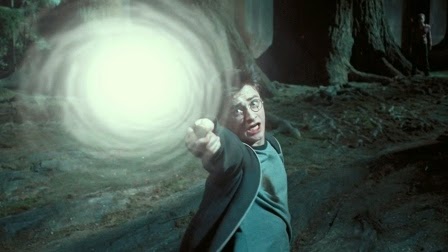"Individual risk attitudes are correlated with the grey matter volume in the posterior parietal cortex suggesting existence of an anatomical biomarker for financial risk-attitude," said Dr Tymula.
This means tolerance of risk "could potentially be measured in billions of existing medical brain scans."1
-Gray matter matters when measuring risk tolerance
Let's pretend that scientists have discovered a neural biomarker that could accurately predict a person's propensity to take financial risks in a lottery. Would it be ethical to release this information to policy makers? That seems to be the conclusion of a new paper published in the
Journal of Neuroscience (
Gilaie-Dotan et al., 2014):
The results will also provide a simple measurement of risk attitudes that could be easily extracted from abundance of existing medical brain scans, and could potentially provide a characteristic distribution of these attitudes for policy makers.
If we accept this line of thinking, it's not much of a stretch to imagine that financial institutions, employers, consumer reporting agencies, and dating services could use this information in a discriminatory, preemptive fashion to screen out
potentially risky applicants. Or perhaps casinos, lotteries, and predatory lending companies could target these individuals with personalized ads.
Conversely, investment firms could vie for traders with the largest right posterior parietal cortices, since they would have the highest tolerance for risk.
Or am I being alarmist about the breach of ethics involved in releasing protected medical information to outside entities? Although the authors subtly deter extrapolation to this invasive scenario by using phrases like "characteristic distribution" and "risk attitudes of populations" (as opposed to risk attitudes of individuals), they're pretty clear about the promise of their gray matter measure to inform policy (
Gilaie-Dotan et al., 2014):
Our finding suggests the existence of a simple biomarker for risk attitude, at least in the midlife [sic] population we examined in the northeastern United States. ... If generalized to other groups, this finding will also imply that individual risk attitudes could, at least to some extent, be measured in many existing medical brain scans, potentially offering a tool for policy makers seeking to characterize the risk attitudes of populations.
Now let's all take a step back and evaluate whether this is currently feasible. The short answer is no (in my view, at least).
1AFirst, we have to be somewhat skeptical of the study's major conclusion.
Voxel-based morphometry (VBM) was to quantify cortical volume from structural MRIs.
2 Gray matter volume in a small chunk of the right
posterior parietal cortex (PPC) was the only place in the entire cerebral cortex that correlated with individual attitudes toward financial risk. In humans, right lateralized PPC has been strongly implicated in
visuospatial attention.
Doesn't it seem more plausible that a region like the
orbitofrontal cortex (OFC), which has been activated in numerous functional neuroimaging studies of
decision making and
risk, would show such an association? Studies in primates have demonstrated that economic risk is coded by single neurons in the OFC (
O'Neill & Schultz, 2014), and in rats risk preference can be differentiated by OFC neuronal responses (
Roitman & Roitman, 2010).
The authors do cite an extensive literature on the role of parietal neurons in decision making, but fMRI studies have observed effects of risk preference in
left PPC, and uncertainty in bilateral PPC (
Huettel et al., 2005,
2006).
But what is the purpose of having a larger gray matter volume in PPC in relation to financial risk attitude? Does it allow for a higher "computational capacity" that can accommodate greater risk tolerance? We don't actually know, as
Gilaie-Dotan et al. (2014) explain:
We do not know precisely how GM volume translates to the neural level. It is possible that volume differences reflect synaptogenesis and dendritic arborization (Kanai and Rees, 2011), but to-date there is no clear evidence of correlation between GM volume measured by VBM and any histological measure, including neuronal density (Eriksson et al., 2009).
In contrast to the neural correlate of risk attitude, a participant's attitude toward ambiguity was not associated with structural differences anywhere in the cortex (
Gilaie-Dotan et al., 2014). How were these attitudes (or preferences) measured? Experimental economics methods were used to estimate individual preferences for risk (uncertainty with known probabilities) and ambiguity (uncertainty with unknown probabilities).
Participants played a game where they could choose between lotteries that varied in monetary value and in the degree of either risk or ambiguity. In the example trial below, the participant chooses either this option, where they stand a 38% chance of winning $18, or the reference option that offers a 50% chance of winning $5.
There were five reward levels ($5, $9.50, $18, $34, and $65), each fully crossed with three probabilities of winning and three levels of ambiguity around the winning probability, as shown below.
Figure 1 (Levy et al., 2012). Risky and ambiguous stimuli.A) In risky stimuli the red and blue areas of each image are proportional to the number of red and blue chips. Three outcome probabilities were used: 13, 25 and 38%. B) In ambiguous stimuli the central part of the image is obscured with a gray occluder. In the gray area the number of chips of each color is unknown, and thus the probability of drawing a chip of a certain color is not precisely known. Three levels of ambiguity were used, where 25, 50 or 75% of the image is occluded.Using a maximum likelihood procedure, the choice data of each participant was fit to a logistic function. Fitting the choice data with a choice function provided estimates for the risk attitude (α) and ambiguity attitude (β) for each person. These were included in multiple regression analyses to determine the neuroanatomical correlates of risk and ambiguity based on the model estimates.
3Two populations of subjects were tested. The first was a group of 21 individuals who participated in the fMRI study of
Levy et al. (2010) at NYU; thus the first analysis was entirely
post hoc, and 7 more people were added later to make the total n=28 (mean age = 25).
4The second group, which served as a validation sample, consisted of 33 healthy subjects from the University of Pennsylvania (mean age = 21.34).
5 A region of interest (ROI) analysis created spheres of six different sizes around the right PPC peak that were compared to control ROI spheres in primary motor/primary somatosensory areas. The right PPC finding replicated at p<.05 or p<.01, whereas there was no correlation between risk attitudes and gray matter volume in the M1/S1 control area.
If you're wondering, like me, whether any other part of the cortex showed a relationship to either risk or ambiguity in Group #2, one sentence in the Results assures us that no other regions were implicated in risk with a standard VBM whole-brain analysis.
Unlike the sweeping conclusions about the policy implications of their results (which were mentioned three times), the authors were appropriately cautious about causality, saying it's not possible to determine whether a big PPC causes higher risk tolerance, or having a higher risk tolerance leads to an increase in PPC gray matter volume. They also warn against assuming any relationship between genetics and risk attitudes. Finally, they acknowledge that the results may not generalize beyond their populations of students at Northeastern universities who are in their early to mid 20s, a time when the prefrontal cortex
isn't fully developed.
I suspect we'll soon see studies that examine risk attitude and gray matter volume across the life span, given the interest of these researchers in Separating Risk and Ambiguity Preferences
Across the Life Span: Novel Findings and Implications for Policy (
PDF).
Footnotes1 It's impossible that there are "billions of existing medical brain scans" because the entire
world population is currently 7.19 billion. Dr. Tymula could have been quoted in error, but this exact phrase appeared in both
ScienceDaily and the original University of Sydney
press release. In the Yale
press release on the study, the number was downgraded to millions:
"Based on our findings, we could, in principle, use millions of existing medical brains scans to assess risk attitudes in populations," said Levy. "It could also help us explain differences in risk attitudes based in part on structural brain differences."
It's commendable that the title of the Yale press release (
Brain structure could predict risky behavior) was more circumspect than the one given to the
J Neurosci article itself.
1AADDENDUM (Sept 16 2014): The billions [i.e. millions] of existing medical brain scans are not all high-resolution T1-weighted anatomical images (1 × 1 × 1 mm3) acquired using a 3T Siemens Allegra scanner equipped with a custom RF coil. In other words, most may not have the anatomical resolution to measure such a small brain area.2 Gray matter volume in the whole cerebral cortex was quantified, but you'll notice that no subcortical structures (e.g., striatum, nucleus accumbens, cerebellum) were measured.
3 More methodological details:
The age and gender of the participants and global GM volume (following ANCOVA normalization) were included in the design matrix as covariates of no interest, and were thus regressed out. F contrasts were applied first with p < 0.001 uncorrected as the criterion to detect voxels with significant correlation to individual’s risk attitudes. Whole-brain correction procedures were then applied...
4 The authors stated that this did not affect the outcome.
5 Oddly, these two groups of young people (mean ages of 25 and 21 yrs) were called "midlife" adults three times in the paper.
ReferencesGilaie-Dotan, S., Tymula, A., Cooper, N., Kable, J., Glimcher, P., & Levy, I. (2014). Neuroanatomy Predicts Individual Risk Attitudes. Journal of Neuroscience, 34 (37), 12394-12401 DOI: 10.1523/JNEUROSCI.1600-14.2014Huettel SA, Song AW, McCarthy G. (2005).
Decisions under uncertainty: probabilistic context influences activation of prefrontal and parietal cortices.
J Neurosci. 25(13):3304-11.
Huettel SA, Stowe CJ, Gordon EM, Warner BT, Platt ML. (2006).
Neural signatures of economic preferences for risk and ambiguity.
Neuron 49(5):765-75.
Levy, I., Rosenberg Belmaker, L., Manson, K., Tymula, A., & Glimcher, P. (2012). Measuring the Subjective Value of Risky and Ambiguous Options using Experimental Economics and Functional MRI Methods. Journal of Visualized Experiments (67) DOI: 10.3791/3724Levy I, Snell J, Nelson AJ, Rustichini A, Glimcher PW. (2010). Neural representation of subjective value under risk and ambiguity.
J Neurophysiol. 103(2):1036-47.
O'Neill M, Schultz W. (2014).
Economic risk coding by single neurons in the orbitofrontal cortex.
J Physiol Paris. Jun 19. pii: S0928-4257(14)00025-4.
Roitman JD, Roitman MF. (2010).
Risk-preference differentiates orbitofrontal cortex responses to freely chosen reward outcomes.
Eur J Neurosci. 31(8):1492-500.















































































